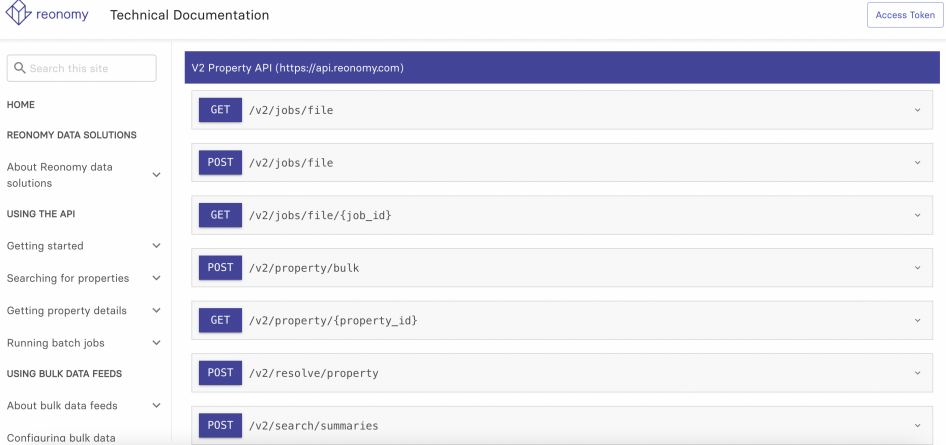
Reonomy
Introduction of the Portal
The Reonomy API reference is autogenerated from an OpenAPI spec combined with custom handwritten content. The site is built on page load after fetching the latest version of the spec, ensuring the site is always up-to-date without requiring a new CI/CD build every time the spec changes.
The Parameters and Response sections are rendered using D3 -- something I haven't seen before. This gives a very compact yet readable format that works well for exploring nested hierarchies, versus the more typical nested expansion panels.
Short-form attribute details are displayed within the tree, while hovering over the attribute name displays the full details within a popover. Clicking an attribute within the Parameters section opens the Query Builder popover that lets you build custom HTTP requests within a fully interactive environment. Helpers let you make selections, build arrays, import GeoJSON, etc.
The autogenerated code is displayed in any of three languages, ready to copy/paste. If you've entered a valid API token, you can run requests directly from the API reference's code component to see the response. Tooltip descriptions are available by clicking the attribute names within the response section.
Guide pages, like https://api.reonomy.com/v2/docs/guides/search/, provide introductory level material and include numerous interactive examples. Some of the endpoints, like POST /search/summaries, accept very large request bodies, which can be a bit overwhelming at first, so the guide page examples display just a few attributes so you can get the feel for them before going to the API reference for full details.
Reonomy makes a huge amount of data available through the API. Attributes are grouped into categories, and D3 visual schemas, like the one here https://api.reonomy.com/v2/docs/api/property-schema#radial, let you see the complete range of data and then focus in on categories of interest.
Why nominated
The Reonomy API reference combines a novel D3+React-based design with fully interactive query builder to create easy-to-use, comprehensive documentation. Please see previous answer for details.




